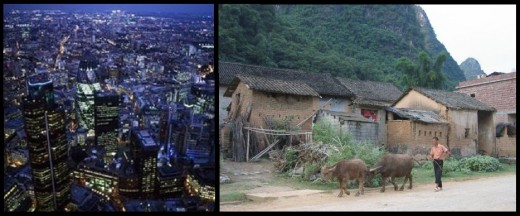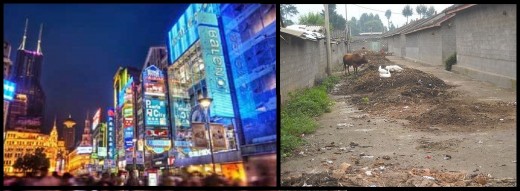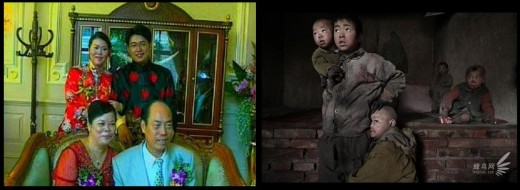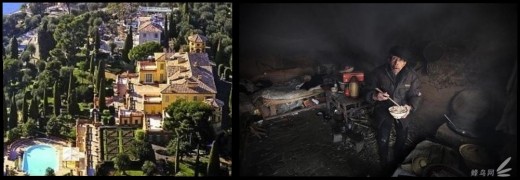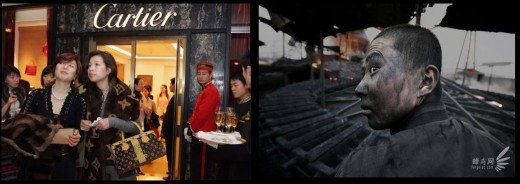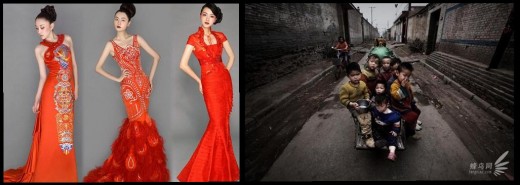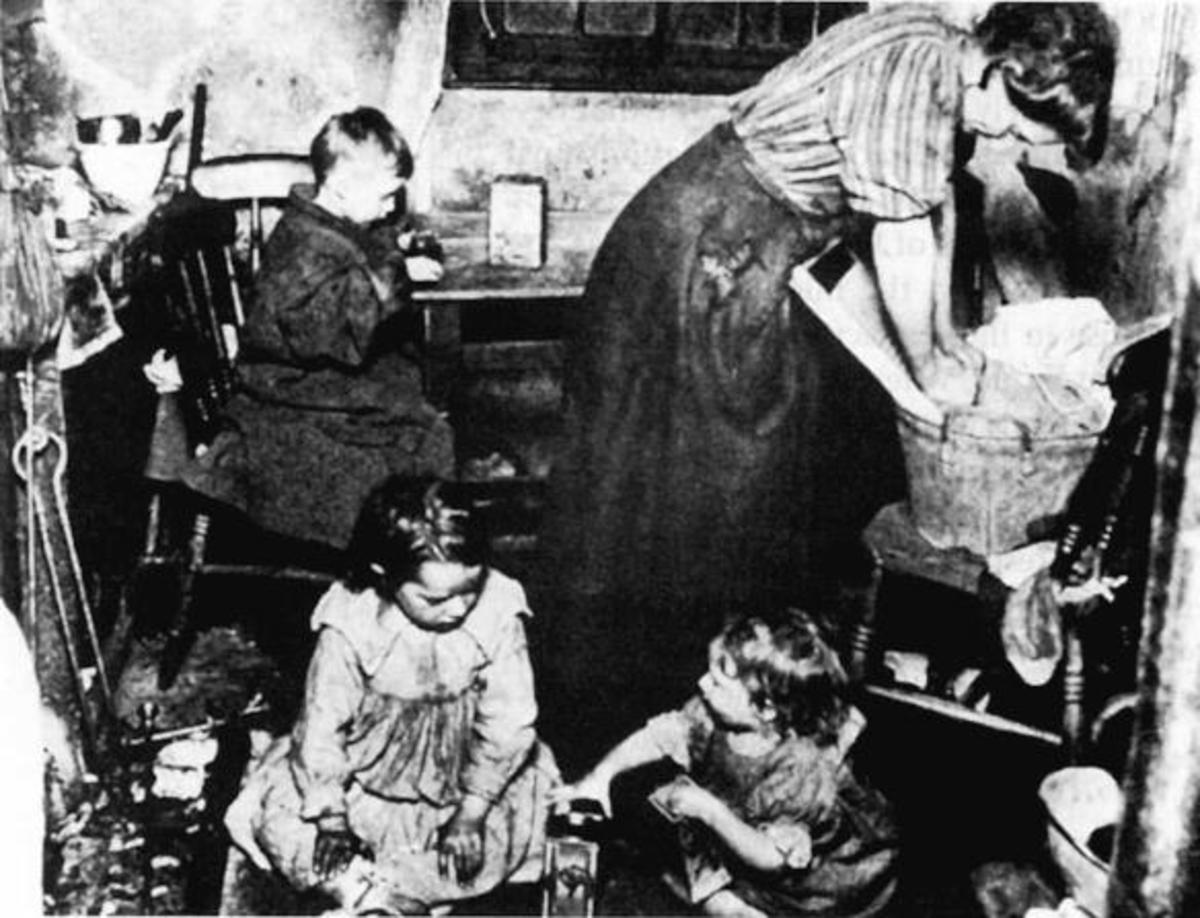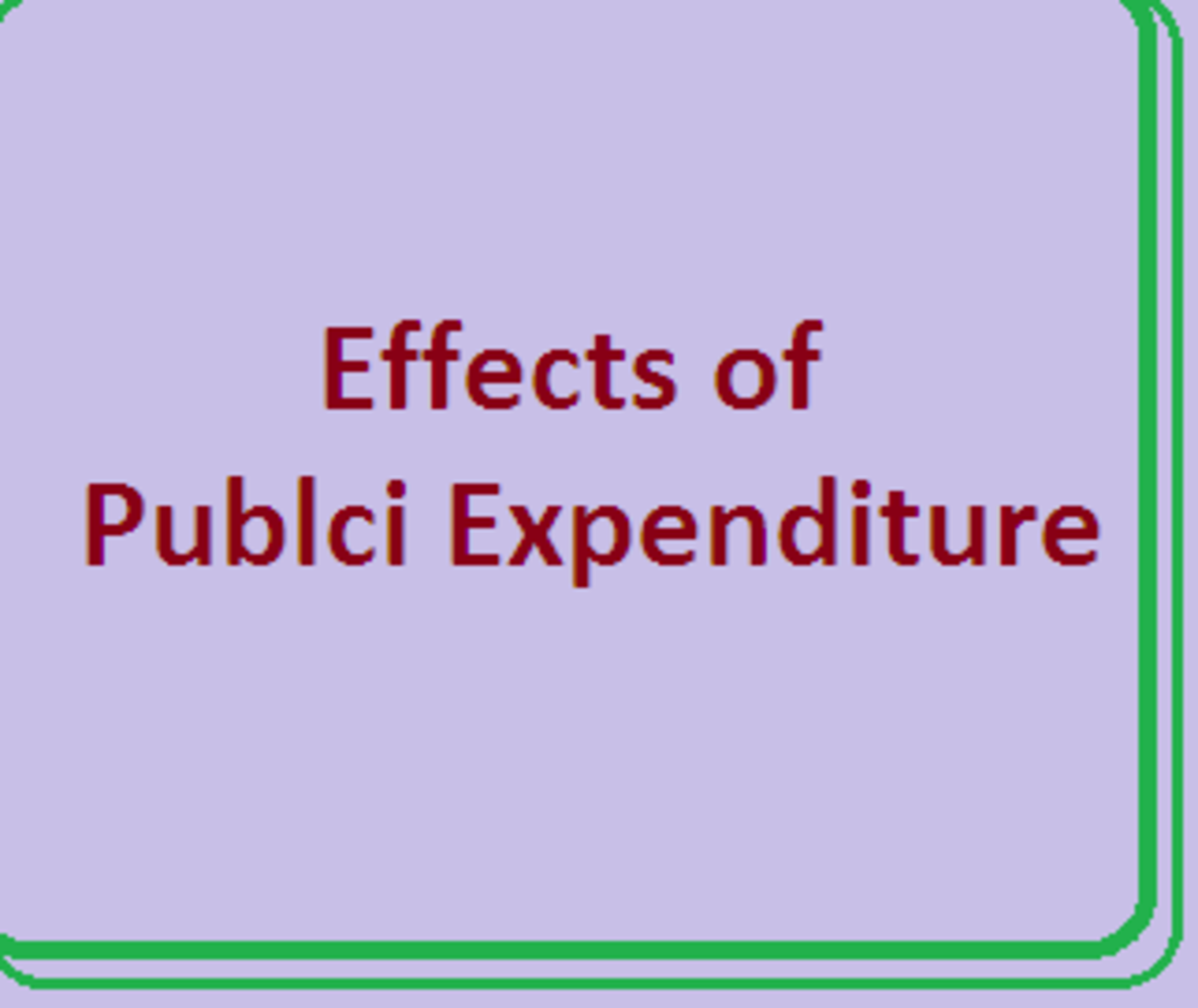The Cost of Economic Growth -- China, a case study
This is a continuation of a previous hub, The Myth of Perpetual Growth, in which we discuss the limits of this planet and our blind refusal to recognize them. We live under an economic system based on perpetual growth, an infinite expansion on an increasingly crowded and finite world.
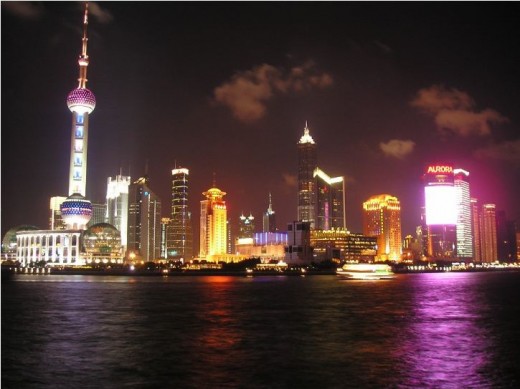
Author's note: The bibliography of sources for this article is almost as long as the article itself, so I chose not to publish it. This represents many weeks of research. Anyone who wishes may contact me for the entire list, or sources for any particular section.

Isn't it amazing?
Wow! Look at China, look at the growth! Isn’t it amazing? The astonishing performance of the Chinese economy has the financial pundits of the west scratching their heads in perplexity, not to mention envy, and left them mouthing a plethora of statements that all boil down to WE should be more like THEM.
“We need to start thinking like the Chinese.”-- nameless opinion show pundit
“The explosive growth of China is due to will and a steady source of energy.” – another nameless opinion show pundit, who went on to suggest such would be the case here, if only…. (We returned to our foundations, our workers rediscovered their productivity, blah, blah, blah)
"We see in China things we used to see in ourselves: can-do, get it done, hard work, sacrifice, 'own the future'. That used to be us, and now we see it in them." --yet another nameless opinion show pundit
"What's most unsettling about China to Americans is not their communism, it's the capitalism What we're losing is much more than just a product that can be found in a store. We're losing a culture and a way of life, a culture of hard work. We're ..." – BBC News
The underlying message is this: the slow demise of our own economy while China's grows at a double digit rate is somehow the fault of the productivity of American worker. Yes, it is, they insist. You see, the American worker has priced himself out of competition in this global world. By insisting on a decent share of our metaphoric pie, he has forced industry to quit these shores and set up shop in places where workers are so long accustomed to no pie at all, they will work for the tiniest sliver, even crumbs.
While there is truth in this scenario, industry will always seek the lowest possible cost in order to turn the highest possible profits, there is a great deal more to the equation than western workers “unrealistic” demands.
Let's begin our journey, but let's embark with a few questions in our minds.
The Human Cost
Can a worker in the United States, or Britain, or Germany, or Canada live on a monthly income of $135 -200/ monthly (the current average factory worker’s pay in China?)
Or will they agree to live in a factory owned dormitory (the rent for which is deducted from their paycheck even if they choose to live elsewhere,) accommodation analogous to an old Second World War prison camp?)
Sorry
Made in China (Unfortunately, this wonderful video regarding working conditions in China is no longer available. The author suggests you search on Youtube, Made in China, Brave New Films
Or work twelve hour shifts, seven days a week with ten days off every six weeks, under conditions that can only be labeled sweat-shop?
I doubt it. The workers of the western world are not yet hungry enough. We’re not ready to accept the Global Sweatshop.
Take the time to view the video to the right, Made In China as a first step into the world we are about to visit.
Who are these young people slaving away in privately-owned factories (that is: not state-owned?)
First we must come to terms with another great difference between China and the Western World. China is not a free country. Domestic migration, the movement of people from on area to another, usually from the impoverished rural areas to the relatively alluring financial opportunities of the urban areas has been tightly controlled and until the recent demand for cheap labor, impossible.
While visitors tend to view the slum-free cities of China, as opposed to the cities of India, for example, as a symptom of economic well-being, the truth is the poor simply are not allowed into the urban areas. Every resident carries an internal passport called hukou and is assigned a status—urban or rural—upon birth, creating a kind of locational apartheid. If people want to move outside their birth hukou, they need official permission, which was virtually impossible to get before liberalization. Now, thanks to the need for cheap labor in China’s urban factories, men can get permission by paying a fee. Women have to pay—and take a pregnancy test to prove that they are not moving to evade birth control restrictions.
“Hukou restricts more than mobility. It restricts social services too. Migrants are not entitled to any of the social services that urban residents get unless they convert their temporary visa to permanent residency, something that is exceedingly hard to do. They can’t get admission in city public schools or get adequate health insurance or other subsidized services or even city bus passes. Hukou makes city life so hard that many couples leave their children home to be raised by grandparents, breaking up families. -- Professor Kam Wing Chan, a hukou expert at the University of Washington.
Video not available
Sorry -- this illuminating video has been removed from the entire internet. I cannot find an available copy of anywhere.
As workers normally live in factory-owned dormitories, or must pay the rent for them whether used or not, family life is impossible. Children are left behind; teenage children move to the cities to become laborers without elder guidance and support; workers strive to live as cheaply as possible to send the maximum amount of money home to their poor rural families – family-life, once the mainstay of Chinese rural society, is weakened, perhaps demolished.
The living conditions they endure are abominable. Take a tour of factory dormitories with a young journalist in the video to the right.
Since the People’s Republic of China’s government embarked on their one-couple-one-birth program, the aging population no longer has the private safety net of children to support them in their old age. They will need a public one – what hukou denies them. A large, disaffected underclass of an impoverished rural population may become one more seat of discontent and unrest, but to provide such a safety net will require diverting 2.5 percent of China’s urban GDP to migrants by 2025 (McKinsey Study.)
Images of glittering Shanghai skylines aside, China is still a developing economy with huge pockets of poverty. And the country's efforts to invest in the less-developed regions away from the prosperous coast of China are just beginning. Urban incomes now are 3.2 times those of rural residents (who only earned $413 per year in 2005, the last year data were available), up from 2.5 in 1978, when China started to reform its economy and open it to the world.
How did this come to be; these privately owned factories exploiting a seemingly endless supply of migrant workers now facing life in an urban environment in which they hold no rights? How, indeed, in a supposedly planned economy of a self-proclaimed socialist state, now dubbed by those enamored with China’s growth as a “shining example of state controlled capitalism?”
We must once again examine a major difference between China and our Western World. Up until the 1980’s, the People’s Republic of China’s government owned and controlled all means of production, and the central government injected massive amounts of capital into the development of industrial complexes, state-owned heavy industry and national infrastructure.
When was the last time a western government planned and invested in industrial development? (Bail outs not included.) Our system runs on private capital used by corporate entities whose very charters of existence demand one and only one directive: maximum profitability and return to shareholders. We do not have the foundation, the structure nor the political/social desire to “collectivise” our resources in accordance with our leaders’ “Ten Year Plan.” Quite the contrary. We wouldn’t give our leaders ten years in power, let alone allow them to formulate a plan for our economy.
So, in the 1980’s when East met West, literally, the PRC made a decision to privatize certain segments of the economy, and the West was invited in. Imagine the glee on the part of those corporations! A new breeding ground of profitability in a land with an enormous, underemployed population which didn’t even have a minimum wage law until 2004 (which was US$122.00 per month;) a land with the supportive infrastructures of railroad, buildings, utilities but without a tradition of corporate income tax, and with a government hungry for foreign currency in order to acquire the raw resources and energy required for such growth. The capitalists must have thought they’d died and gone to heaven.
Perhaps they had.
The China Price
What is the result? The China price.
The term “the China price” is international businesses’ name for the lowest possible price to get anything made – anywhere.
As a result, factories sprang up in China’s “foreigners’ corridor” like mushrooms. Watch the video to the right The China Price, for a view of this area from a train, and the voice over describing what is inside this myriad of buildings. Surely Shangri-La from an industrialist's point of view.
But it wasn’t too long before there was trouble in paradise.
An update added May 6, 2011
Further to the conditions at Foxconn, here is a must read article for the UK's Daily Mail titled You are NOT allowed to commit suicide: Workers in Chinese iPad factories forced to sign pledges
Factories making sought-after Apple iPads and iPhones in China are forcing staff to sign pledges not to commit suicide, an investigation has revealed.
At least 14 workers at Foxconn factories in China have killed themselves in the last 16 months as a result of horrendous working conditions.
Many more are believed to have either survived attempts or been stopped before trying at the Apple supplier's plants in Chengdu or Shenzen.
An investigation of the 500,000 workers by the Centre for Research on Multinational Companies and Students & Scholars Against Corporate Misbehaviour (Sacom) found appalling conditions in the factories.Read the entire article.
Strikes and Suicide
On May 17th, 2010, hundreds of worker in a Honda auto component manufacturing plant in Nanhai, Guandgong went on strike, protesting low wages. The huge salary gap between the Chinese workers and Japanese workers caused the most complaints. An ordinary Chinese worker’s monthly salary is only 1,000 yuan (USD 146.5) while a Japanese worker can earn 50,000 yuan (USD 7,325) each month. In addition, nearly all the medium-end and above management positions are taken by the Japanese. On June 4, Honda agreed to add 500 yuan (USD 73.20) to the worker’s pay each month. The strike ended.
At the same time, May 2010, in the sprawling factory complex of Taiwan’s based Foxconn, the ninth factory worker that year jumped to his death through a window in the plant. Before another two months were passed, that figure was 12 suicides. Foxconn’s answer? -- Five-meter long steel poles were bolted into the walls below the roofs to support webbing that will eventually cover 1,500 square meters. In response to charges the suicides were due to inhumane conditions, CEO Terry Guo opened the complex to a group of journalists.
The walled-in industrial park employs 300,000 workers and looks more like a small city with fast-food restaurants, bakeries, Bank of China branches and towering dormitories for workers. The visitors were first escorted to an Olympic-sized swimming pool, and interviewed workers who, each and every one of them, insisted Foxconn took good care of them, and that most workers were very happy. Yet, earlier that year, Guo was quoted as saying the company’s success was due to “the first-class customers, second-class equipment, third-class management and fourth-class talents”, of which the first-class customers are Apple, Nokia, HP and Dell and the fourth-class talents are the Chinese workers.
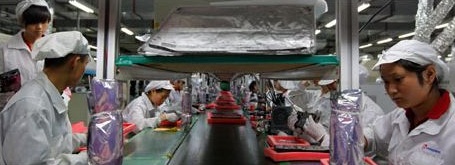
Foxconn Suicide Scandal
In truth, Foxconn’s benefits arising from this pattern is much smaller than its customers. For example, Apple subcontracted the production of its iPad and iPhone to Foxconn and can enjoy a 50% profit margin.
The 12 known deaths were all of migrant employees in the 19-24 age range. Most of the eight men and four women were in their first job since leaving school. Half had been there for less than four months. Most leapt from Foxconn buildings.
Some employees blame the spirit-sapping work at the plant. "It's very tough," said Liu Jichang, a 19-year-old migrant from Guangxi province, who earns 2,000 yuan (£200) a month polishing the cases of Apple computers a minimum of 10 hours a day, with as much overtime as he can get in order to make a livable wage, 6 days a week. "We are not allowed to talk while we are working. In any case, it is too noisy to have a conversation." Critics allege that Foxconn manages its plants with a strict military approach and workers must work too much overtime on assembly lines that move too fast.
In Foxconn’s defense, the suicide rate among Chinese factory workers is very high, higher even than Foxconn’s record.
Perhaps in response, the Central Government increased the minimum wage to USD 140.62, and for the first time set safety standards in order to "ensure the basic needs of the worker and his family, to help improve workers' performance and to promote fair competition between enterprises."
As a result, in the early months of 2011, for the first time the number of factories and the even more infamous “shadow” factories is in decline.
Apparently, there are other places in the world where starving farmers are willing to work 10-12 hours a day for pitiful wages and in brutal conditions to make cheap cellphones.
Is it fair to say the first visible cost of growth for China has been the wholesale exploitation of her massive population?
My father, a thoughtful, educated man who’d seen much change in the world since his birth in 1918, once told me, “The problem with socialism [and its necessary form of ‘progressive’ taxation] is that all are brought down to the lowest common denominator.” It appears to me that global capitalism has the same result in mind – at least for the workers of the world.
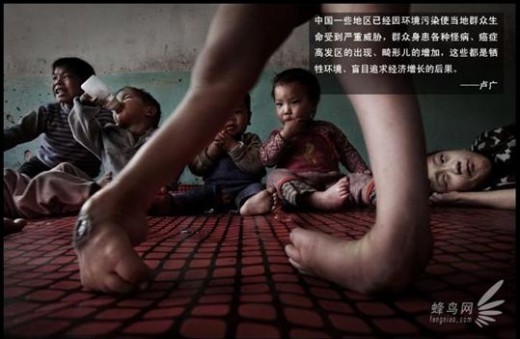

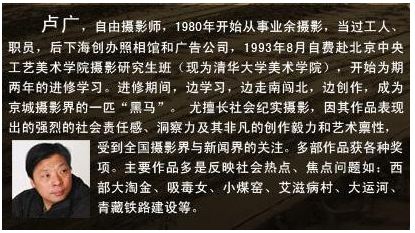
The Deadly Cost -- Air, Water and Soil
“In Some areas of China people’s lives are threatened because of the environmental pollution. Residents suffering from all kinds of obscure diseases, the cancer villages, increase of deformed babies, these were the results of sacrificing environment and blindly seeking economical gain.” - Lu Guang
I am pleased to introduce the photographer Lu Guang to those who have not previously seen his work. He is famous (or infamous) for his exposure of China's reality, and very generous, as he has made his work available for all to share with an invitation to "use, share with everyone."
"Lu Guang (卢广), freelancer photographer, started as an amateur photographer in 1980. He was a factory worker, later started his own photo studio and advertising agency. August of 1993 he returned to post-graduate studies at the Central Arts and Design Academy in Beijing (now is the Academy of Arts and Design, Tsinghua University). During graduate school, he studied, traveled all over the country and carved out a career, became the “dark horse” of the photographer circle in Beijing. Skilled at social documentary photography, his insightful, creative and artistic work often focused on “social phenomena and people living at the bottom of society”, attracted the attentions of the national photography circle and the media."
Air
Recently, China assumed the dubious distinction of being the world's greatest polluter.
23% of the world's carbon emissions come from China, surpassing the past long-term record holder, the United States of America at 20%. But whereas America's emissions are declining, China's are growing at a rapid rate.
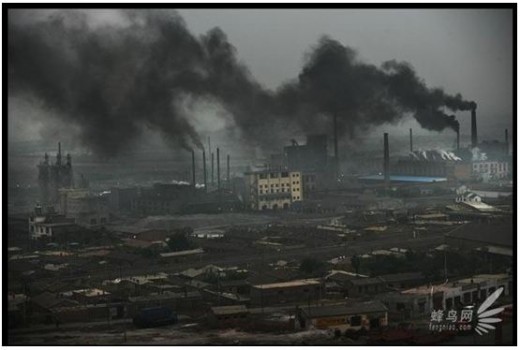
China Rated World's Top Polluter
China's Grime Belt -- Air Pollution
According to the World Bank’s report on quality of life, 16 of the world’s 20 cities with the worst air are in China. According to Chinese government sources (where they can be found and trusted), about a fifth of urban Chinese breath heavily polluted air. Visitors report a pervasive smell of high-sulfur coal and leaded gasoline. Only a third of the 340 Chinese cities that are monitored meet China’s own pollution standards.
The air pollution and smog in Beijing and Shanghai are sometimes so bad that the airports are shut down because of poor visibility. Sometimes you can't even see buildings a few blocks away and blue sky is a rare sight. The civic authorities monitor air at five different stations, but the US Embassy takes it’s own readings several times a day and broadcasts their findings via Twitter.
“Since the US embassy in Beijing began tweeting hourly reports of pollution last year, I – along with many other smog watchers – have been horrified at the frequency of "bad" and "hazardous" readings.
But this week, the depth and murkiness of the haze was so appalling that the automated system briefly entered the realm of black comedy with a "crazy bad" analysis of our air.
The outlandish description appeared on the @beijingair Twitter account late yesterday when levels of PM2.5 tiny particulate matter surged past 500, about 20 times higher than the guideline issued by the World Health Organization.” – posted by Jonathon Watts, UK citizen living in Beijing
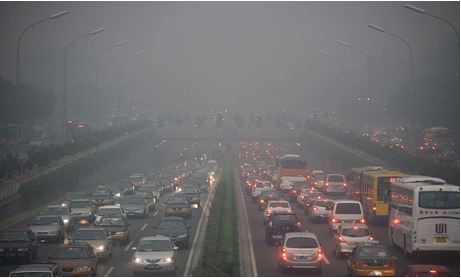
In Shanghai sometimes you can't see the street from the 5th floor window. “Fresh air tours” to the countryside are very popular. Less than 1% of China’s 560 million city dwellers breath air considered safe by International standards according to a World Bank study.
Air pollution is particularly bad in the rust belt areas of northeastern China. A study done by the World Health Organization (WHO) estimated that the amount of airborne suspended particulates in northern China are almost 20 times what WHO considers a safe level. So intense is the pollution of this area, that recent studies proclaim it the worst air quality in the world.
See the map below.
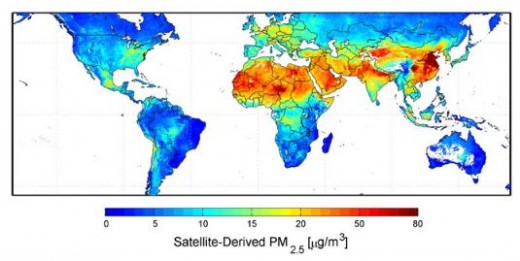
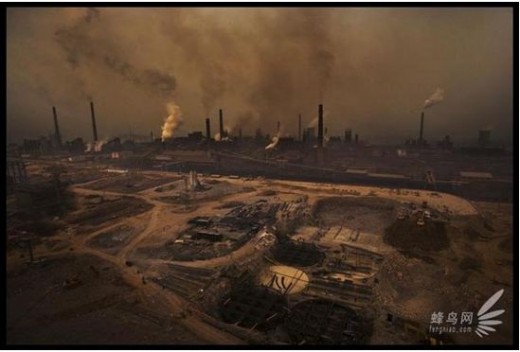
Jay Apt, an astronaut wrote in National Geographic, "many of the great coastal cities of China hide from our cameras under a blanket of smoke from soft-coal fires." The northeast industrial town of Benxi is so polluted that it once disappeared from satellite photos. Its residents have the highest rate of lung disease in China.
Cities like Beijing and Shenyang have poor air dispersal and low-level temperature inversions. In fact, "urban centers in that region record some of the highest readings in the world for total suspended particulates (TSP) and SO2 (sulfur dioxide.)
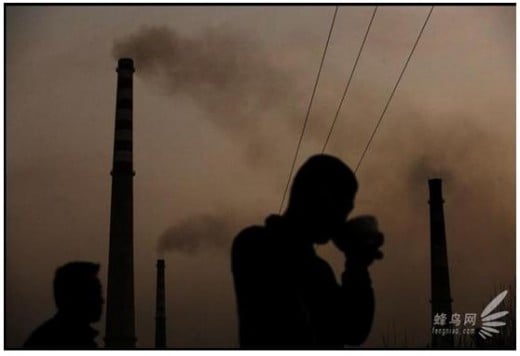
The Japanese government proposed acid-rain abatement programs which provide cities in China five-year, low-interest loans to reduce acid rain degradation. The funding has been capped at $10 billion in loans (2001 – 2006) but the plans are still being negotiated. The Chinese government argued that at least $15 billion should be provided in loans in order for the project to work. China's officials have been quoted as saying that if the Japanese are the ones concerned about acid rain, then they should properly fund what is needed for the prevention plans to be executed correctly.
In southern China, areas such as Sichuan, Guangxi, Hunan, Jiangxi ,and Guangdong, have growing acid precipitation problems. In 2002, nationwide emissions of SO2 were estimated at 18.85 million metric tons, and as a result, in many areas 90% of all rain is acid rain (sulphuric acid.)
When sulfur dioxide is emitted into the atmosphere, it takes approximately ten days for it to settle to the earth during which time, the sulfate particles can travel several thousand miles. China is not the only country suffering from acid rain problems. Mongolia has complained of rain that raised blisters on the skin. Other Asian countries, such as Japan, Taiwan, S. Korea, and the Philippines have all reported acid rain problems originating from China's coal burning pollution. The Central Research Institute of Electric Power and Industry in Japan has reported that acid rain from the China mainland has become a major problem for Japan.
Coal is the number once source of air pollution in China. China gets 80 percent of electricity and 70 percent of its total energy from coal, not just any coal, but most of it high-sulphur coal. Around six million tons of coal are burned every day to power factories, heat homes and cook meals -- the indoor burning of "smoky" coal, as opposed to smokeless coal under unvented conditions.
Scientists have predicted by the year 2025, China will emit more carbon dioxide and sulfur dioxide, two products from coal burning, than the United States, Japan, The European Union and Canada combined.
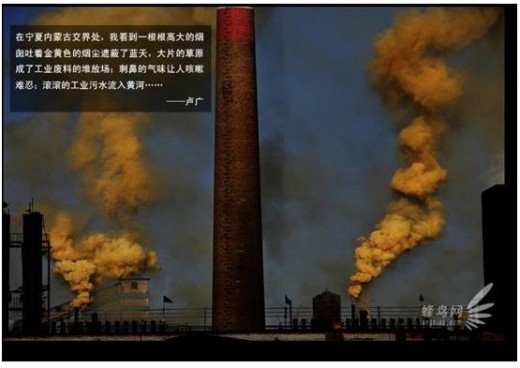
Water
By far the most serious environmental issue that the Chinese urgently need to resolve is that of water.
A crisis is looming. Insufficient water is already limiting industrial and agricultural output in some areas and threatening to curb China's high economic growth rate and food production.
The country is facing increasingly frequent and
desperate shortages, disastrous flooding in some areas, and dangerous levels of pollution – some estimate
75% of the water resources in China are heavily polluted.
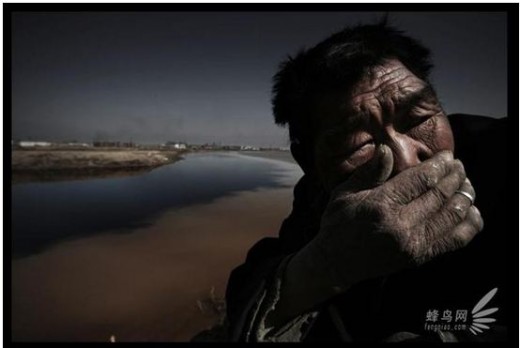
Water Pollution in China
China is a signatory nation of the Stockholm Convention, a
treaty to control and phase out major persistent organic pollutants (POP). ] It
is a big challenge for China to control and eliminate POPs, since they often
are cheaper than their alternatives, or they are unintentionally produced and
then simply released into the environment to save on treatment costs. Watch the video to the right, Water Pollution in China, for some truly frightening images.
Effluence from factories and municipal wastes are not the
only pollutants to be considered. All that SO2 pouring from the sky
in the form of acid rain is changing the PH balance of much of China’s water,
making this precious resource hostile to wildlife, fish, plant growth … and humans.
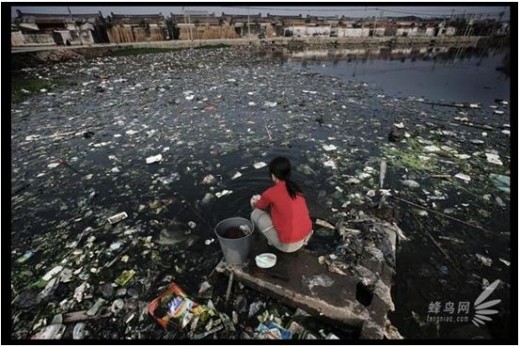
Inorganic pollution in the form of garbage chokes many of China's waterways, -- particularly plastic water bottle -- much of it entering the oceans. Unlike their rural counterparts, urban dwellers have access to and can more easily afford bottled water, but despite government recycling programs, most users simply toss them. Said one American living in Shanghai, who traveled throughout the country:
"The Chinese litter. I mean, a lot. They tell me it creates jobs for the poor -- and I suppose it does, but everywhere you look there's garbage. And garbage pickers pouring over the mounds, selecting what might be worth money. Even so, every river, stream, lake and even the coastal waters carry tons of plastic, cans and who knows what. I've never seen anything like remotely like it. It's sad. Not a stretch of completely clear water to be found, not even in the richest areas." Andrea Plett -- an American with two years residency in China
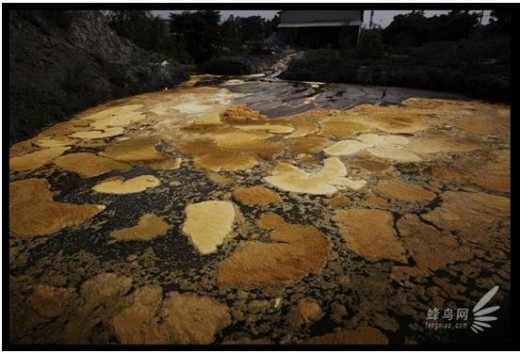
Factory waste continues despite new regulations issued by the Central Government. Environmental laws are often simply not implemented. Sometimes it’s corruption, other times “guanxi” (connections and bribery.) Beijing either can’t or won’t stop them.
Read the following account written by Mark Hertsgaard, who toured China for months, investigating environmental concerns and pollution.. One specific case involved a paper factory in Chungking, on the Jialin River with a forty-year history of polluting the local waters, but the local official of the Chungking Environmental Protection Bureau told him the plant had been closed, and no, he would not be able to visit the facility.
Hertsgaard went ahead without permission and describes approaching the supposedly “shut-down” factory with his guide and translator Zhenbing.
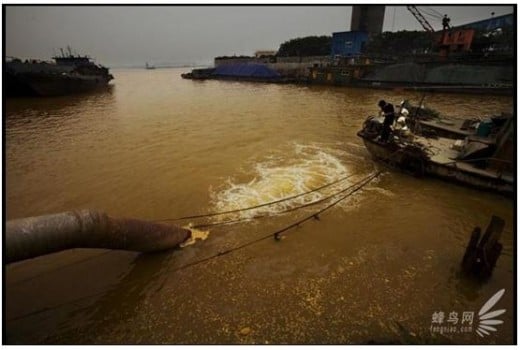
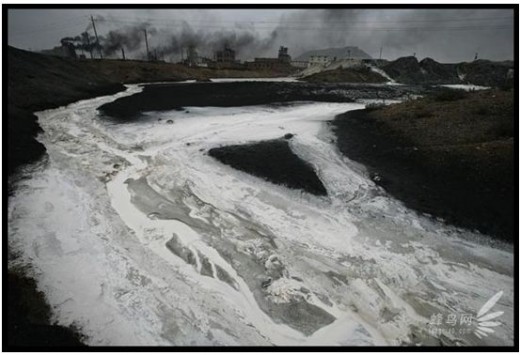
“….found the front gate open when we arrived, and since no one stopped us, we simply walked in. At the back of the plant a set of concrete steps led down to the Jialin River, perhaps eighty yards below. Halfway down Zhenbing and I cut left across the exposed riverbank, our shoes leaving clear prints on the dark, sandy soil.
Within seconds we saw a broad stream of bubbling water cascading out the back of the plant and down the hillside. The astringent odor of chlorine attacked our nostrils, and once we reached the stream's edge, the smell was so powerful that we immediately backed away. Below us, where the discharge emptied into the Jialin, a frothy white plume was spreading across the slow-moving river.
Fifty yards farther on we encountered a second stream, this one a mere foot wide but clogged with pineapple-sized clumps of dried orange foam. Beyond was a third creek. Its stench identified it as household sewage (workers in China's state-owned factories generally live on site or nearby), but its most extraordinary feature was its color -- as black as used motor oil. Not ten yards away a grizzled peasant in a dark-blue Mao jacket and trousers (an outfit still worn in China by the poor) bent over a tiny vegetable patch to pick some greens for his midday meal.
All this was dwarfed by what lay ahead. The vapor was what we saw first -- wispy white, it hung low in the air, like tear gas. Stepping closer, we heard the sound of gushing water. Not until we were merely footsteps away, however, could we see the source of the commotion: a vast, roaring torrent of white, easily thirty yards wide, splashing down the hillside like a waterfall of boiling milk.
Again the scent of chlorine was unmistakable, but this waterfall was much whiter than the first. Decades of unhindered discharge had left the rocks coated with a creamlike residue, creating a perversely beautiful white-on-white effect. Above us the waterfall had bent trees sideways; below, it split into five channels before pouring into the unfortunate Jialin. All this and yet the factory, as one worker had informed us, was operating at about 25 percent of capacity.” – Mark Hertsgaard
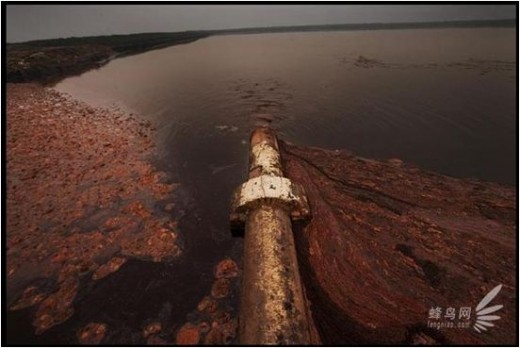
Hertsgaard goes on to write:
“Despite witnessing all this, Zhenbing was not exactly a militant environmentalist. Born into a very poor rural family thirty years ago, he, like most Chinese I had met, was quite willing to put up with filthy air and polluted water if it meant more jobs, better pay, a chance to get ahead. But today's experience had shaken my new friend. Outside the factory we were waiting for the bus back downtown. I was scribbling in my notebook when, behind me, I heard Zhenbing murmuring, as if in a dream, "My poor country. My poor country."
Semi-official estimates admit around 300,000 million Chinese are without access to safe water (almost he population of the United States.) But those who've been there and seen believe the situation to be worse -- much worse.
If this were only a national problem, we could rest content to let China stew in her own juices, but water, like the air knows no boundaries or borders. The true extent of China's pollution is impossible to know, but all environmental experts agree it is "crazy bad."
Except those here in the West so enamored of China's growth, they blindly accept and reiterate the continual flow of official optimism. Even Wikipedia dutifully reproduces reports of declining air and water pollution and continual improvement. Reports not substantiated by first hand observations of those who've been there and studied actual conditions.
But pollution isn't the only issue in China's water crisis.
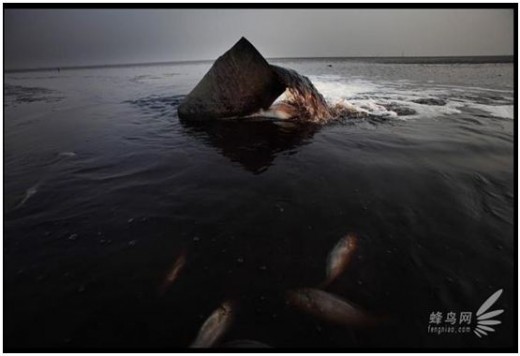
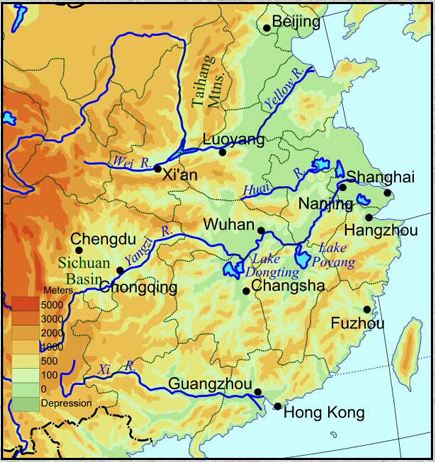
Drought, floods and diminishing rivers mean that it is not only the quality of the water creating a crisis, but the quantity.
The map to the right shows China’s main waterways, yet surprisingly, population density does not follow water resources. An estimated 44% live in the northern and northeastern provinces where 58% of the cultivated land is found, but only 14% of country’s water resources supply the area, creating a massive water deficit.
As though mocking the plight of the arid area, the south is prone to flooding, causing great losses in agriculture and harvest as well as in human lives.
Over China’s late history, the rivers – the main sources of water have been abused, not only by pollution but by diversion schemes for crops, dams for flood control, reservoirs for industry which in some cases have reduced flow dramatically. The Yellow River, the water mainstay for China’s wheat and corn producing area is an example. Water no longer reaches the sea on about 200 days a year. The growth of the urban areas means cities now compete with agriculture. Downriver from Beijing, the Juma River’s flow has dropped considerably and harvests have declined drastically. The city’s needs come first.
Again, in what may well prove to be another solution creating yet worse problems, massive water diversion schemes are underway – canals under construction to feed the dwindling Yellow River from the Yangtze (which is extremely polluted.) What the end cost will be is unknown, but they will be high, not only in terms of money but ecological damage: loss of farmland, displacement of populations through dams, reservoirs and aqueducts, and of course the spread of the toxic material the Yangtze carries.
The Central Government has begun to encourage development in the south of the country where water is plentiful, which likely will mean the problem of pollution will accompany such growth – unless the environmental regulatory body grows some teeth, unlikely given the present mindset of graft, bribery, connections and corruption. Those first-hand observers whose input was important to this article say there is little indication in the present to suggest such hopes for the future, despite the rhetoric of the political leaders.
Last year, the following news story suggested that tide may be turning. Perhaps the authorities will put their might where their mouths alone have acted.
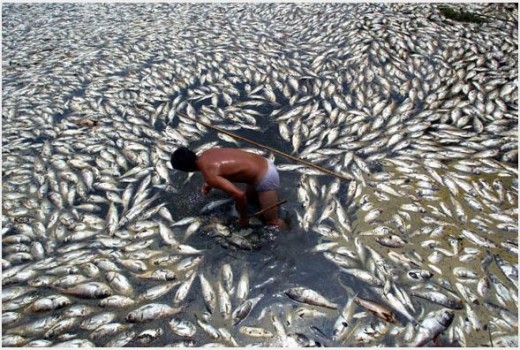
Zijin Mining Group admits toxic spill polluted Ting River, blames accident. Investigators say leakage was deliberate as witnesses point out that latest incident was the third since June.
Beijing (AsiaNews/Agencies 07/16/2010) – Police have detained three senior employees of China's top gold and copper producer Zijin Mining Group over a toxic pollution spill that has killed off about 2,300 tonnes of fish in the Ting River, one of the main water sources for Fujian Province. Upon learning of the incident, the authorities reacted angrily at the mining company’s failure.
The manager, deputy manager and head of environmental protection at the Zijin-operated copper mine are in custody, Shanghang County authorities said in a statement.
Zijin, China's third-largest copper producer, blamed the leak from a sludge pond on rains that have pounded Fujian for the past few weeks, saying it responded immediately to the mishap and controlled the spill within 24 hours.
Investigators have found that 9,100 cubic metres of wastewater leaked from the sludge pond through an “illegally built passage” into the Ting River.
Experts believe that such an amount of waste could have leaked into the river only over weeks. Some media are reporting that two spills had already occurred in June.
Local fishermen said that last month the river turned a dark colour and fish began to die.
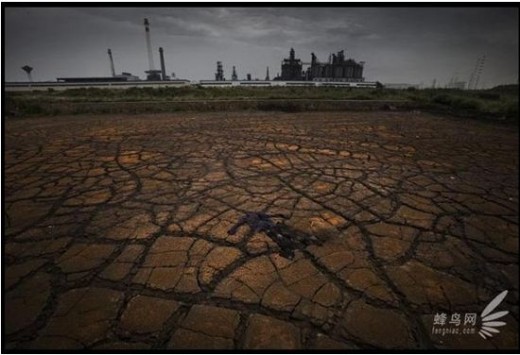
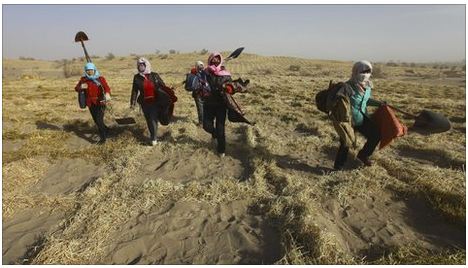
Soil
China’s soil problems suggest food production will drop by almost half over the next five decades, even while the 1.3 billion population continues to grow. The assault on the land is multi-faceted:
- Soil exhaustion caused by poor agricultural practices,over-grazing and deforestation.
- Erosion by wind in the north and water in the south. (40% of China’s territory suffers from severe soil erosion.)
- Desertification (27% of China’s land mass is arid, either desert already or deteriorating, and the desert is expanding.)
- Flooding.
- Urban growth.
- Industrial growth and pollution.
- Acidification due to acid rain.
China's arable land is literally disappearing, strange as such a statement may sound. And at a rate that should create more concern to the Central Committee than it does.
The recent change to a more open country (at least open to the outside world) has at least brought the extent of China's problems out into the open. Read the following news stories.
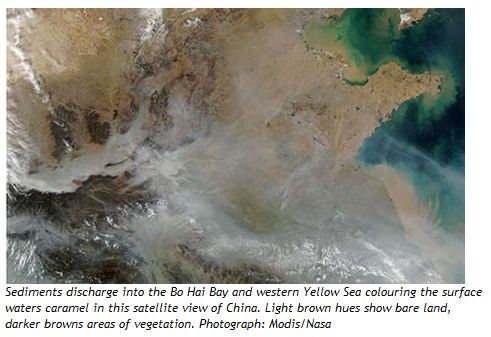
Beijing (Xinhua) May 2010 - Almost 100 million people in south-west China will lose the land they live on within 35 years if soil erosion continues at its current rate, a nationwide survey has found.
Crops and water supplies are suffering serious damage as earth is washed and blown away across a third of the country, according to the largest-scale study for 60 years.
Harvests in the north-east, known as China's breadbasket, will fall 40% within half a century on current trends, even as the 1.3 billion population continues to grow.
While experts cited farming and forestry as the main causes, contributing to over a third of the area affected, the research team said erosion was damaging industrial areas and cities as well as remote rural land. About 4.5bn tonnes of soil are scoured away each year, at an estimated cost of 200bn yuan (£20bn) in this decade alone.
The poor will be worst hit, warns the report from China's bio-environment security research team, which worked on the survey for three years. Almost three-quarters of them already live in erosion-hit areas.
The country's 80,000 reservoirs are also affected, with sand and mud reducing their storage capacity each year. Like soil deposits along rivers, that increases the risk of flooding.
"If we don't conduct effective measures, erosion will cause major damage to social and economic development," Chen Lei, the director of the Ministry of Water Resources, told the official People's Daily newspaper.
Professor Mu Xingming of the Institute of Soil and Water Conservation was quoted in the UK journal, The Guardian, as stating overpopulation was largely to blame. He said his analysis of north-east China over the last century proved the deleterious effects of increasing population density, and the population of China is less aware of the need for environmental protection than in other countries.
Mu cited the Yellow River as one of the areas worst hit. "Historically, it got its name because of its colour - because the water contains more mud and sand than other rivers. But now it's yellower because of human activities," he said.
This quoted study is the country's largest soil conservation scientific survey since 1949, when the People's Republic of China was established.
It showed:
- 1.61 million square km of land is suffering from erosion by water and 1.96 million square km is being eroded by wind.
- Erosion could be found in almost every river basin in every Province.
- The problem is severe as 4.52 billion tons of soil eroded every year.
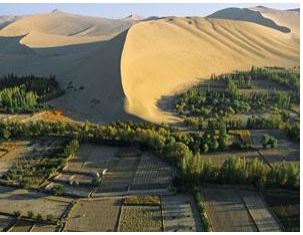
Desertification of Northern China
Taming the yellow dragon -- fighting desertification in China
Northern China is already facing the effects of climate change, according to the team who undertook this study. Whereas once the region could rely on regular light rainfall which sustained those crops suitable for the arid region, the patterns of rainfall have changed. Over the past decade the territory has seen prolonged drought broken by rain in the form of deluge, which runs off the parched land and destroys the crops.
These factors have drastically increased the rate of desertification in the northern grass lands. Beijing has been concerned about this for many years, says Mu, and scaled back logging after deforestation contributed to massive flooding along the Yangtze in the late 1990’s.
Mu said more work was needed to restore forests and
grasslands and suggested humans would have to leave some areas entirely if they
were to recover. This is underway, giving rise to a new phenomenon: the ecology
refugee, as more and more shepherds and farmers are forced off the land due to
the relentless advance of the desert.***
This has led to a massive program of replanting and reforestation in an effort to slow the process, halt it and eventually reverse it, a program much touted in official releases. However, a senior official who leads China’s efforts to battle the desert, Liu Tuo has said investment and effort has been “seriously insufficient.”
"At our present rate of treating 1,717 sq km a year, I've just calculated we'll need 300 years," said Liu.
300 years to treat the 1.73 thousand square kilometers (.67 thousand square miles) of desertified land in China, of which about 530,000 square kilometers are considered redeemable. Efforts to date have succeeded in slowing the advancing sand dunes in some areas, but Liu adds that global climate change will most likely exacerbate the problem by causing drought.
- BBC NEWS | In Pictures | In pictures: Life in Hongsibao
Sean Gallagher was awarded a travel grant from the Pulitzer Centre on Crisis Reporting to cover desertification in China.
*** The Chinese government is in the process of building new settlements for the "ecology refugees." The link to the right is to a photo-essay on one such new town, Hongsibao, recently highlighted by the BBC. I forwarded this link to one of my correspondents in China, who laughingly referred to it as a "Potemkin's Village," and suggested the plight of these refugees was far more dire, and that they were more numerous and impoverished than the West can imagine.
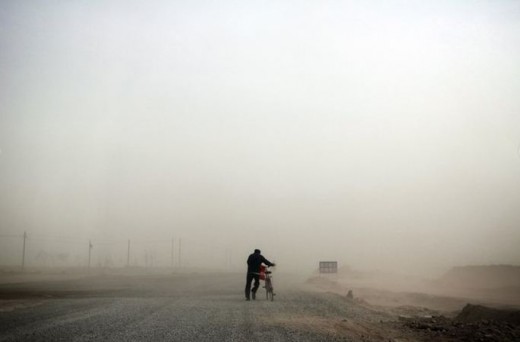
Southern China has always experienced seasonal storms, the monsoon cycle, yet according to China’s Office of State Flood Control and Drought Relief Headquarters, weather patterns over the past three decades have changed drastically to a cycle of extreme weather events.
Last year’s floods were catastrophic, arriving on the heels of the area’s most severe drought in history, spanning three seasons.
“Since 1517, when records began in the small Chinese village of Xiazha, there has always been water in its three wells."
This spring, however, the wells dried up.
"I'm 83 years old, I've never seen anything like this," said Yang Kuanren, a villager in Xiazha, in Guangxi province. "Not a single drop of water can be seen in our wells. For hundreds of years, we have relied on those wells for irrigation and drinking water and we do not know what to do. It is time to start planting the fields, but the earth is so dry we cannot even plough it."
Three enormous water reservoirs that normally feed the village, and its neighbours, which usually hold enough water to irrigate 5,000 acres of land, have also run dry.” – Malcolm Moore, Shanghai, March, 2010
According to eyewitness accounts, villages started drilling new wells, but there is
little water to be found, even several hundred feet below ground. Thousands of
people left their homes and land, migrating to possible water sources. For a poignant look at the reality of this drought
only twelve short months ago, follow this link to a site of a photo-journalists
report of this tragedy.
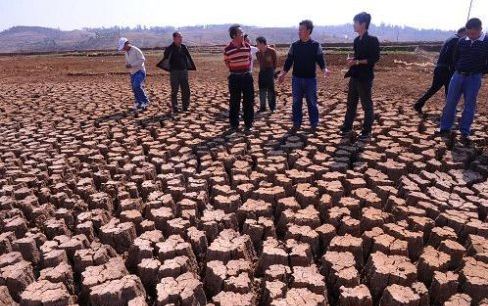
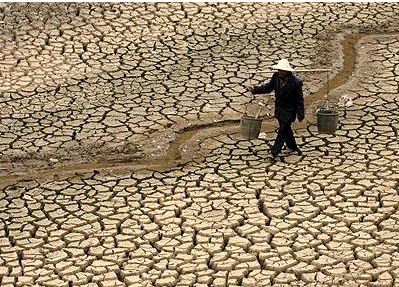
“Beijing, Xinhua, April 2010 -- In response to the drought, which has swept across Yunnan, Guangxi, Guizhou, Sichuan and Chongqing, China has mobilised the full might of its army, sending troops to deliver 1.4 million tons of emergency food and thousands of water trucks.
Wen Jiabao, the prime minister, has made a personal visit to the region to reassure villagers, some of whom are having to trek more than 12 miles a day to collect water. Growing enough food to hit China's targets this year "will be a test for sure" in the wake of the calamity, said Mr Wen.
More than 50,000 villagers in Yunnan have been forced to leave home and camp near streams in the foothills of the Himalayas.
The normally sub-tropical south of China saw its rainy season evaporate this year, with the average temperature in Yunnan two degrees higher than normal, and rainfall at only half the usual level.
Yunnan is the source of several of Asia's biggest rivers, including the Yangtze and the Mekong and almost a billion people living downstream could be affected as they dry up. The Mekong is at its lowest level for 20 years. Over five million hectares of forests have withered or been ravaged by fires.
The cost of the drought in failed crops and falling electricity production from the region's network of hydroelectric dams is already estimated at 24bn yuan (£2.36 billion) and there could be knock-on costs for the huge aluminum smelters that set up in the region to take advantage of the cheap hydroelectric power.
To produce rain, the government began seeding the clouds above 88 cities in Guizhou this week.
However, according to Accuweather, the American weather forecaster, there is "little prospect for meaningful rainfall [in the region] until May".
A spokesman for the Yunnan Land Resources bureau said: "The situation here will get worse in the coming months before it gets any better, but hopefully if we drill more wells and divert more water to those in need, we can help ease the situation."
Six short weeks later, the news reports from the region changed as drastically as new possibly could:
Beijing, Xinhua, June 2010 --Heavy rain that continues to ravage southern China has claimed 365 lives and caused $US10.4 billion in damages. More than 145 people have been reported missing as of Thursday, according to China’s Office of State Flood Control and Drought Relief Headquarters (SFDH) Xinhua reports.
Torrential rains have battered 10 provinces and effected 30 million people, with a couple million people having been evacuated. And the rain is expected to continue.
Floods have already caused power outages and damaged roads as well as railways, while leaving millions of people without access to drinking water. Rain has already damaged 215,000 homes, flooded farmlands and killed 17 percent of the crops in the region. Long-term aid may be required as the loss of crops from the flooding could cause a food shortage in the next six to twelve months.
You do not need to understand the commentator to be appalled by the images in this raw video footage of the 2010 floods of Southern China.
Flooding in Southern China
This is the worst flooding in the region since 1998–when 3,600 people died while 20 million were displaced. The Jiangxi province is experiencing its worst flooding on record, as the Fuhe River overran its banks for the second time Wednesday, forcing 100,000 residents to evacuate, while other cities in the province are in danger of landslides.
Meanwhile more than 16,000 soldiers and civilians have been mobilized by the provincial governments to aid in the flood relief and rescue work. The president of the World Water Council, a 14-year-old international think tank, applauded China for its flood relief response and resource mobilization..
Premier Wen Jiabao praised the response by relief crews, but told them to prepare for more flooding and landslides. Food and tents have been rushed to scores of residents impacted by flooding.
With more rain in the forecast, water levels on Hunan’s Xiang River are projected to reach a record high of 42 meters. Eight million people have already been impacted in the province.
Although rescue and relief efforts have been impeded by the steady rain, Wen offered encouragement to rescue workers. “You are not afraid of sacrifice and in 48 hours, managed to rescue 100,000 people without a single casualty…You have created a miracle in history.”
Even in a country that has maintained weather records going back to the first century, such opposite extremes over a short period of time are unprecedented. Whether one accepts the precept our polluting activities on a mass scale cause climate change, which in turn causes extreme weather events is irrelevant to the result. China is losing her land on an increasing scale and thereby losing her ability to produce food for an ever-increasing population.
While no one can control the weather, there’s no doubt human activities on the land have greatly increased the adverse effects of flooding. Deforestation, cultivation destroying natural cover, antiquated agricultural practices which hasten erosion, the leveling of riverbanks for industrial purposes – all conspire to make a bad situation worse.
Even without floods, south China soil washes to the seas at an alarming rate.
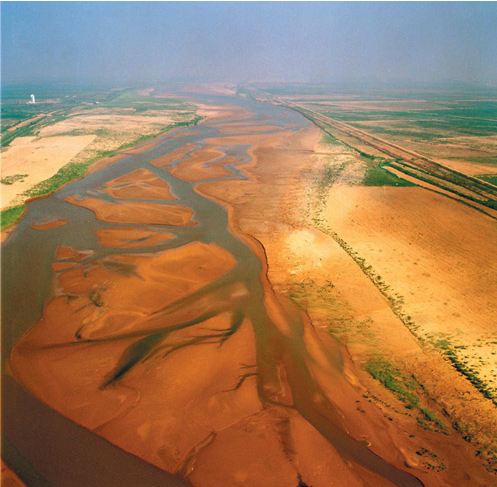
In what can only be described as action/reaction/over-reaction, private investment in housing, particularly up-scale housing in China ballooned well beyond demand (or at least the demand by those who can afford such housing -- considering some cities are experiencing a 20% unemployment ratio as more and more unskilled, impoverished workers from the rural areas defy officialdom and pour into the urban areas.)
The country is now dotted with acres and acres of uninhabited housing developments in what was a serious real-estate bubble -- which would have burst long ago if Chinese banks operated as do banks elsewhere.
Said on source, "Chinese banks are banks in name only. The entire country is set up for a financial collapse if the banks are ever allowed to deal with sour loans. The current situation is supported by the Central Government, a time bomb waiting to explode."
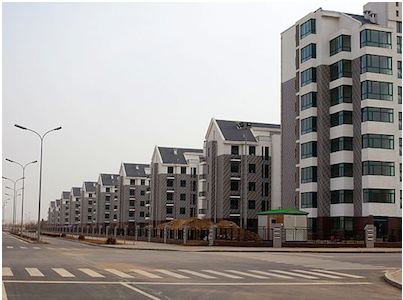
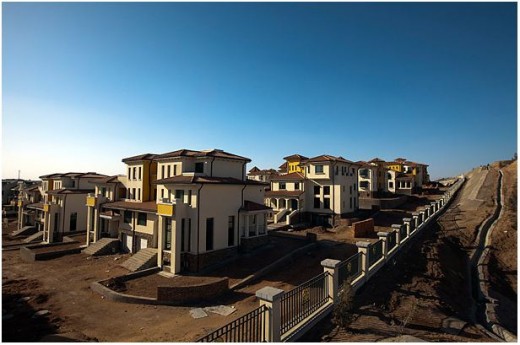
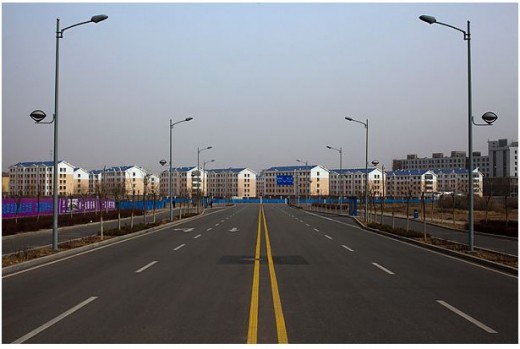
Erosion by wind and water are not the only problem reducing China’s productive land; urban and industrial expansion is gobbling up the land at an accelerating pace.
In 2007, the Chinese Communist Party (CCP) capped 30 years of economic liberalization with a revolutionary land law. This law, the Property Law of the People’s Republic of China, granted the private acquisition of land-use to both foreign and domestic private parties.
Starting in 2008, agricultural collectives, which traditionally had limited ability to individually transfer their land use from agricultural to urban or industrial, began to contract their rights to non-agricultural developer, under a similarly revolutionary policy statement - Decision on Certain Issues Concerning the Advancement of Rural Reform and Development.
These laws had the aim to help flatten the economic disparity between the increasing rich urban population and the increasingly marginalized peasant agricultural class.
Their goal was to spur the development of modern agriculture and promote the construction of a “new socialist countryside.
Spurred by a great flood of cheap, migratory labor leaving the agricultural areas, and years of industrial development, agricultural land has been converted to residential, commercial and industrial land at an unprecedented rate.
This conversion, which has been accomplished through both legal and illegal means, has effected China's grain security, contributed to increased agricultural pollution, and created large groups of landless migratory workers.
Existing laws have provided a framework to limit the conversion of agricultural land, but their language and enforcement is inadequate. Indeed, changes such as the 2008 Decision have inadvertently exacerbated a growing problem of agricultural land destruction.
Less than ten percent of China’s land use and environmental laws are actually enforced.
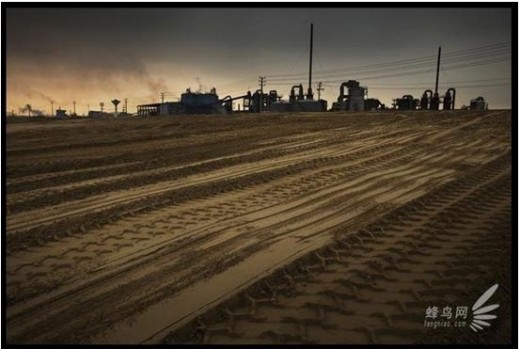
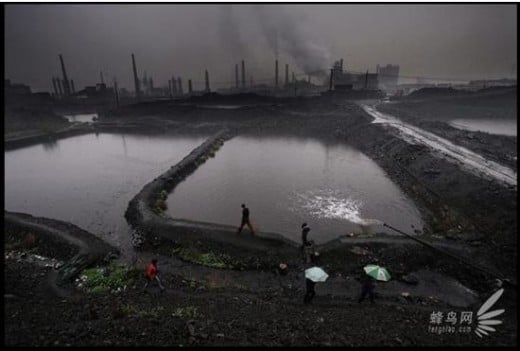
With available arable land at an all-time low and an ever-increased rate of conversion, China’s population has changed in character. Urban populations have grown from 18% in 1978 to 42% in 2004. In the last three decades, urbanized land grew from 10,000 square kilometers to 28,500 square kilometers.
Land use by industry has increased at an even greater rate, not only occupying what was once arable land, but leaving it toxic, useless, with poisons leaching slowly into the groundwater.
Worse,these chemical lagoons are often only yards away from plots on which foodstuff is grown. The need for irrigation of these plots only increases the rate of toxic leaching.
The favored places for industrial developments is often on the banks of rivers and other waterways. While this arrangement allows industry access to water without great cost, it also means the most productive farm lands, those along river banks where irrigation is easiest and soil is deposited by the rise and ebb of the water flow, are the first to be transformed.
Add to this the increased need for roads and railroads to service these new developments, all increasing the loss of farmland.
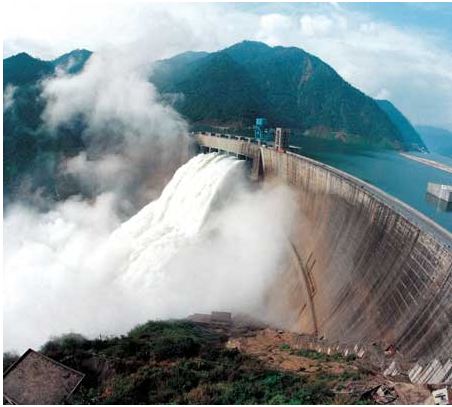
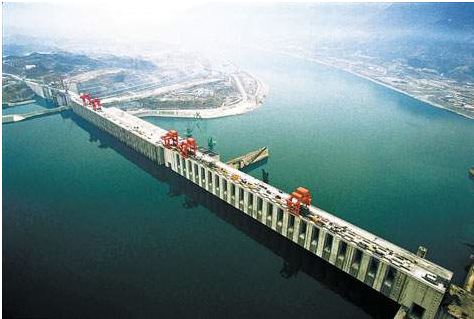
In what can only be described as the Central Governments love affair with hydroelectric projects, in the past 50 years China built over 80,000 dams and power stations – displacing 4.5 million persons, and consuming 500,000 acres of what was once the most fertile land in the country (and severely restricting the flow of her much abused rivers.)
As if the combined loss of farmland to erosion and urban expansion was not serious enough to jeopardize any possibility of self-sustaining food production, there is one more factor at work, one that is not receiving the attention it should.
Acid rain falls predominantly in the fertile south, the wet lands producing rice (that great Asian staple,) vegetables, fruits – giving two to three crops per year as opposed to the one crop capabilities of the grain producing lands to the north. In some areas, virtually all rainfall is acid rain.
Crop reduction, crop failures and the loss of bio-diversity due to acidification of the water and soil is conservatively (same say unrealistically) estimated at 2.5% of China’s GDP. Add to this figure the loss of entire fisheries (water at a lower PH than 5 does not support fish life) and the impact of acid precipitation is catastrophic.
All told, China is rapidly losing the ability to feed herself, even as the population growth*** demands more food.
(*** Population growth: Certainly lower than in previous times, but still not the one couple; one child official mandate, which seems to be more slogan than practice, particularly in the rural areas. The true population of China is a well kept secret it seems, as the Central Government does not wish to admit to the failure of the population control program.)
The Paradox
The Central Government of the People’s Republic of China is all too aware of the ecological problems they are facing, but what are they to do? Once viewed as an all-controlling dictatorship, much has changed. Social unrest is now a fearful spectacle. To take the necessary actions, clamp down on the corruption, the pollution, the social exploitation and face the double risk of a stalled economy and a contingent massive investment in environmental improvement would be sure political suicide.
Among the country’s emerging working to lower middle class, all is not well. Mrs. Wong wants a washing machine, a dishwasher – the Chinese Dream -- all to be purchased on credit and requiring yet more electrical energy, more coal burning plants, more dams across the rivers… Did I mention the second car?
The great masses of poor, migrant labor want more than a life of unrelenting work, living twelve to a room in a factory-owned dormitory. They want to be Mrs. Wong.
In the rural areas, impoverished farmers also want more, something beyond long days of labor for a life of subsistence. They want jobs for their children, a better future.
The growing number of ‘ecology refugees,’ farmers forced off the land due it’s unsustainability, the encroaching desert, floods, or pushed off due to development, live in dire poverty, and they, too, want more.
The wealthy industrialist has an enviable life, but he also demands more. (Isn’t that the way with the wealthy everywhere?) 115 of the world’s 500 wealthiest people, according to Forbes, live in China. Considering the life and death problems faced by most of China’s population, one would wonder what difficulties they face, but apparently they do. (A recent article called Three Problems Facing China’s Newly Rich Business Leaders showed up in my research, so I read it and link it here for you so you may share in the irony.)
The biggest cause of China’s problems is also her much touted greatest strength – her massive population. Which is also the government’s biggest threat. One cannot control 1.3 billion people unless they agree to be governed.
This realization, new to the Chinese government, has left them unable to act, at least on a scale such a disastrous state of affairs requires. Though they pay lip-service to the idea of green, sustainable development, and often chide the West for our excesses, they continue on what is clearly a one-way, dead-end route.
In the name of economic growth, they have clearly decided to leave the factories and other hazards essentially undisturbed and one envisions them sitting in their seats of power with fingers crossed behind their backs, praying the resultant destruction does not trigger either unmanageable popular protest and unrest, or long-run economic decline.
Said one source, a senior official in Liaoning, a region of winter cold and 30% unemployment, “Heavy pollution may kill you in a hundred days, but without enough heat, food or water you die in three.”
“As for the peasants, well, they dare not dream of good guangxi. Blood, sweat and tears for these fellows. Being at the bottom of the totem pole means shouldering the ridiculously heavy taxes that fund the trip abroad for the children of local leaders (or, in many cases, the lavish, debauched banquet to celebrate said trip.) Being at the bottom also means that roadside veggie vendors must haggle fiercely over pennies, that when the state owned enterprise goes belly up, you're the first to be laid off. If possible, you move to the city and bleed some more and haggle even harder over pennies – all this amidst periodic crackdowns to enforce nebulous codes regulating the movement of the masses (the hukou systems). As a peasant, you either add to the urban unemployment and risk the wrath of the local city officials, or you squeeze as much produce as humanly possible out of plot of land and pay tribute to the local village officials.” – Mark Hertsgaard
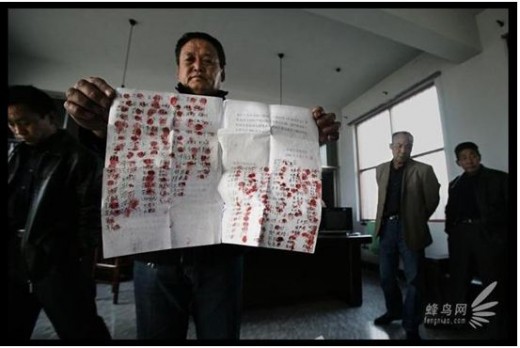
So China goes on committing ecological suicide – for how else can it be described?
What a downward spiral:
- Industrialization and exploitation ravages the country’s ecology reducing China’s ability to feed itself, and poisoning not only the land, but the inhabitants.
- The need to import more food increases as the agricultural productivity decreases, which requires more outside capital.
- The need for more outside capital requires more industrialization.
- More industrialization increased the deleterious effects on the environment, further reducing food productions.
- Which increases the need to import food….
- Which increases…
- Which decreases…
One in five humans on this planet lives in China, a country apparently hell-bent on destroying itself in the name of economic growth. This is not to say China is not committing the same mistakes as the rest of the world -- in fact we did them first -- only that the demands of her population greatly increase the pace of destruction. In fact, we might say China is a microcosm of the entire world – the perfect case study.
As for her much-envied economic growth? Factor in the tremendous, deadly cost of these environmental issues, conservatively estimated at 20% of GDP, and this brings ‘growth’ in measurable terms almost to a standstill.
As a commenter on my previous hub, The Myth of Perpetual Growth, said, ”When all the resources are used up, may I have a bowl of coins and a cup of currency to wash it down?”
1 picture is worth 1,000 words. The great contrast that is China.
